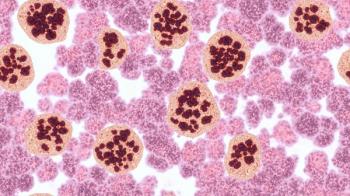
CHEST 2025: Improving COPD Outcomes Through Team-Based Care at Mayo Clinic
Megan Dulohery Scrodin, MD, highlights Mayo Clinic's innovative COPD care model, emphasizing multidisciplinary collaboration and AI tools for improved patient outcomes.
Megan Dulohery Scrodin, MD, a pulmonary medicine physician with Mayo Clinic,
Pharmacy Times: What lessons can be learned from Mayo Clinic’s model of COPD care?
Megan Dulohery Scrodin, MD: One of the things that we really try to do in the pulmonary clinic is to standardize our approach, so we do prerequisite testing on all of our COPD patients. We strive not to repeat testing that has been done recently, so we ask our patients prior to arrival when they last had pulmonary function testing, a chest CT, or a chest X-ray.
If they have not had recent PFTs or chest imaging, we get a complete pulmonary function test on all of those patients—first, to confirm we have the right diagnosis. We also get a chest CT scan for a variety of reasons if they haven’t had a recent one. It’s helpful for us to quantify the degree of emphysema and look for other concomitant pulmonary diseases. It’s also helpful to ensure that the patient does not have any pulmonary nodules that are concerning for cancer.
Many of my COPD patients have been active smokers and therefore have a cancer risk. They may or may not be in a lung cancer screening program because, despite many efforts, lung cancer screening is still happening at a low volume.
We also get a CBC with differential on all of our patients. That helps us to look for the eosinophilic phenotype and for anemia as another source of their shortness of breath. In addition to those tests, we’ve started screening all of our COPD patients for alpha-1antitrypsin deficiency with blood testing, unless they are already identified as alpha-1patients.
The last and probably most interesting addition to our testing is an electrocardiogram. My cardiology colleagues at Mayo Clinic have developed AI algorithms that can detect potential atrial fibrillation, aortic stenosis, heart failure, pulmonary hypertension, and even cirrhosis in patients based on an ECG. Even if the ECG doesn’t show atrial fibrillation, it can show the likelihood that they may be having arrhythmias that we are not detecting.
That is incredibly helpful for us to use as a simple test to increase our suspicion that there may be concomitant cardiac disease. By having that information upfront, I think it helps us get to the right therapy decisions quickly and identify important comorbidities for patients.
Pharmacy Times: What role can pharmacists and other clinicians play in collaborative COPD care models?
Dulohery Scrodin: The care team in COPD is one of the most important aspects as we think about our patients because we can’t do everything as physicians alone. In particular, pharmacists can play a great role when we’re thinking about what therapies to consider. There are a wide variety of inhalers and delivery mechanisms, and pharmacists, as well as respiratory therapists and trained nurses, can help ensure that patients can take their medication appropriately.
Inhaler technique is important, and selecting the right therapy based on patient factors is key. Our pharmacists can do a lot of follow-up with us and help troubleshoot side effects with medications. They can conduct visits to unburden physician staff and help navigate side effects. Incorporating a pharmacist in the outpatient clinical space—as well as inpatient—can ensure we are making really solid decisions.
Pharmacists can also help with COPD exacerbations, such as determining what antibiotic therapy to consider for severe exacerbations. They can assess whether the patient has Pseudomonas risk factors and help ensure we are good stewards of antibiotic use.
I also mentioned respiratory therapy and nursing. They are key team members. My nurses do follow-up assessments to make sure patients are using their inhalers effectively and understand their technique. We’ve now incorporated respiratory therapists who can help patients with breath-conserving measures and teach them how to clear mucus from their lungs. We know that mucus plugs are important, so really, the full care team is needed.
Newsletter
Stay informed on drug updates, treatment guidelines, and pharmacy practice trends—subscribe to Pharmacy Times for weekly clinical insights.




















































































































































































































